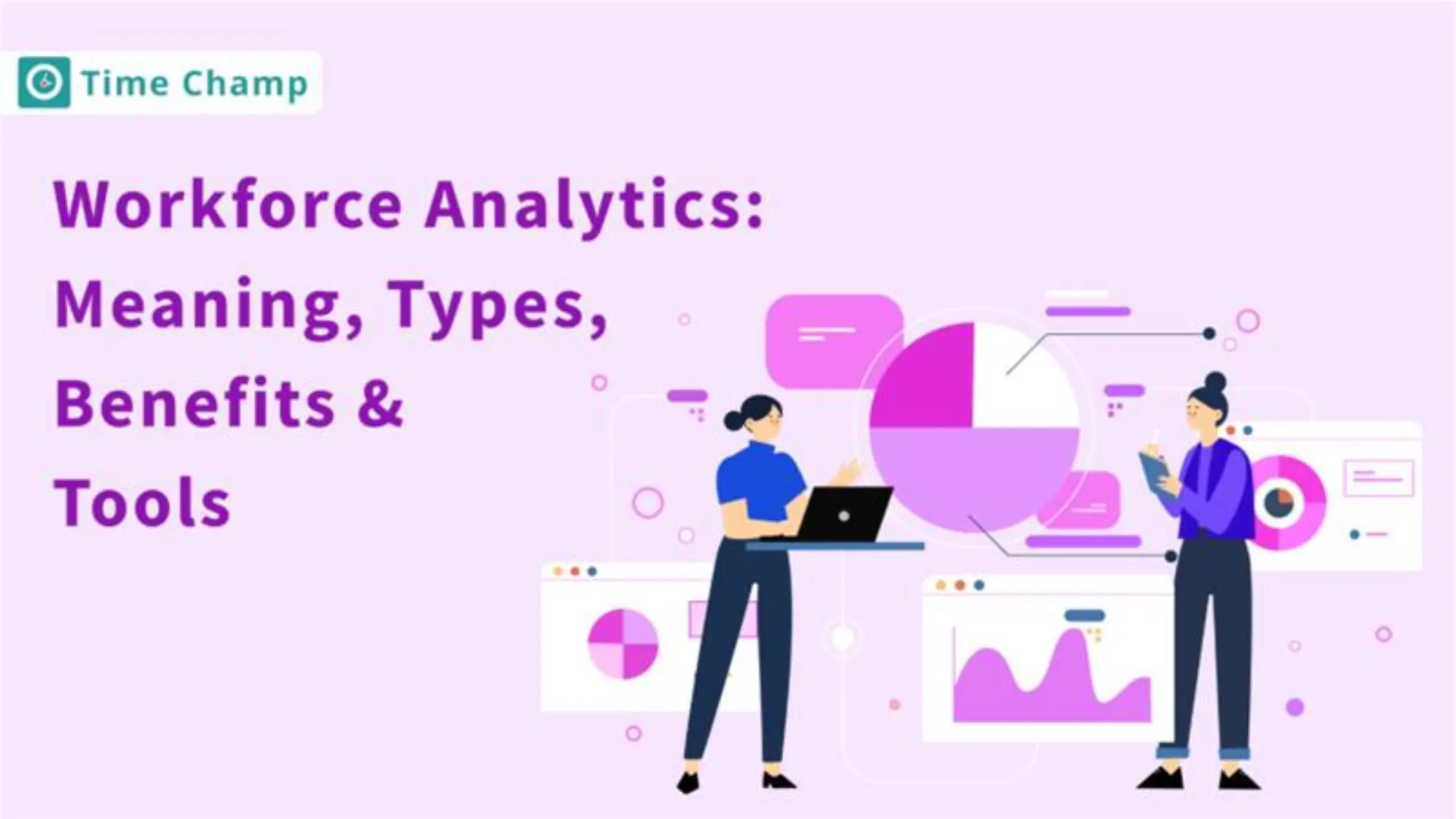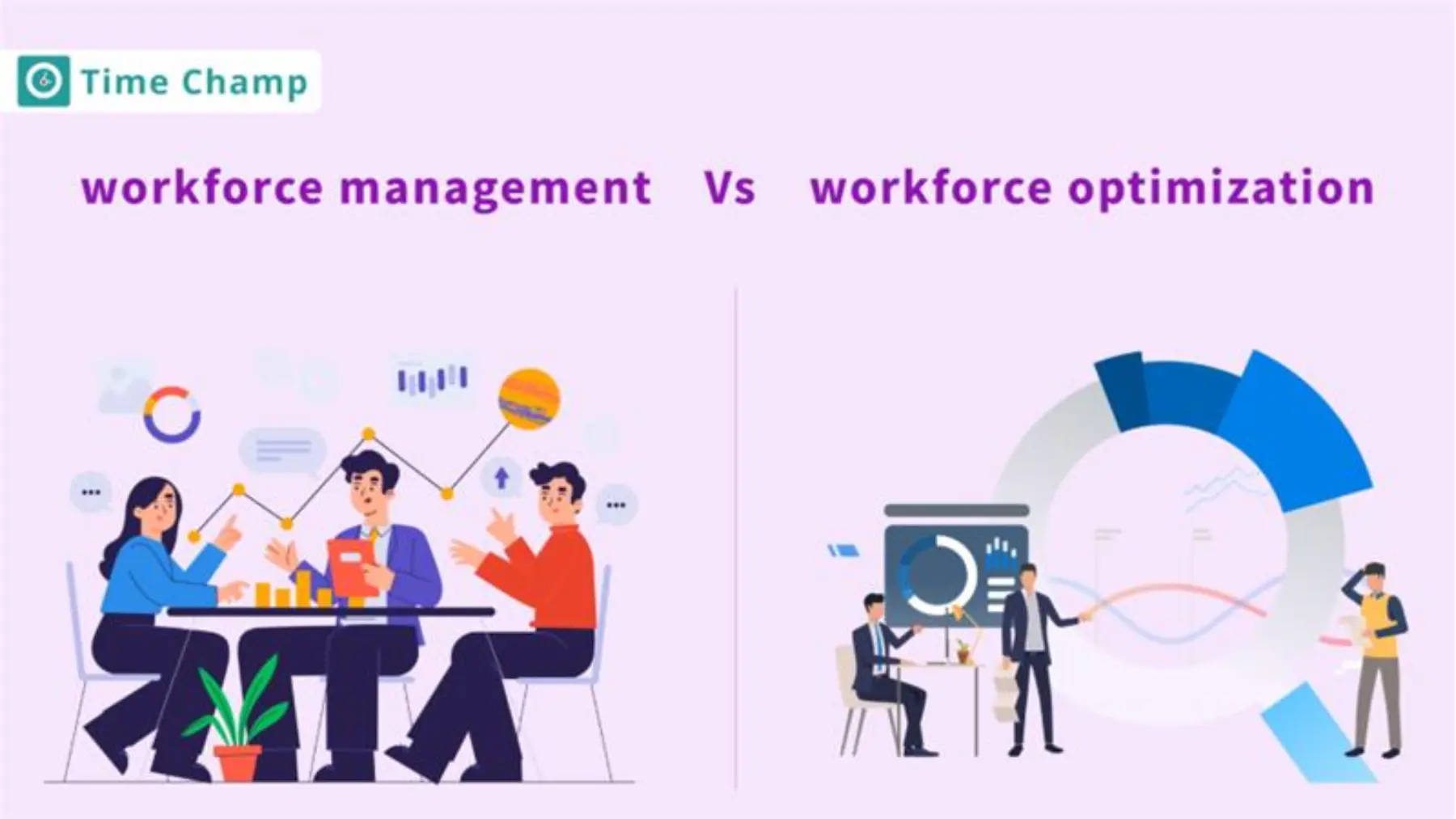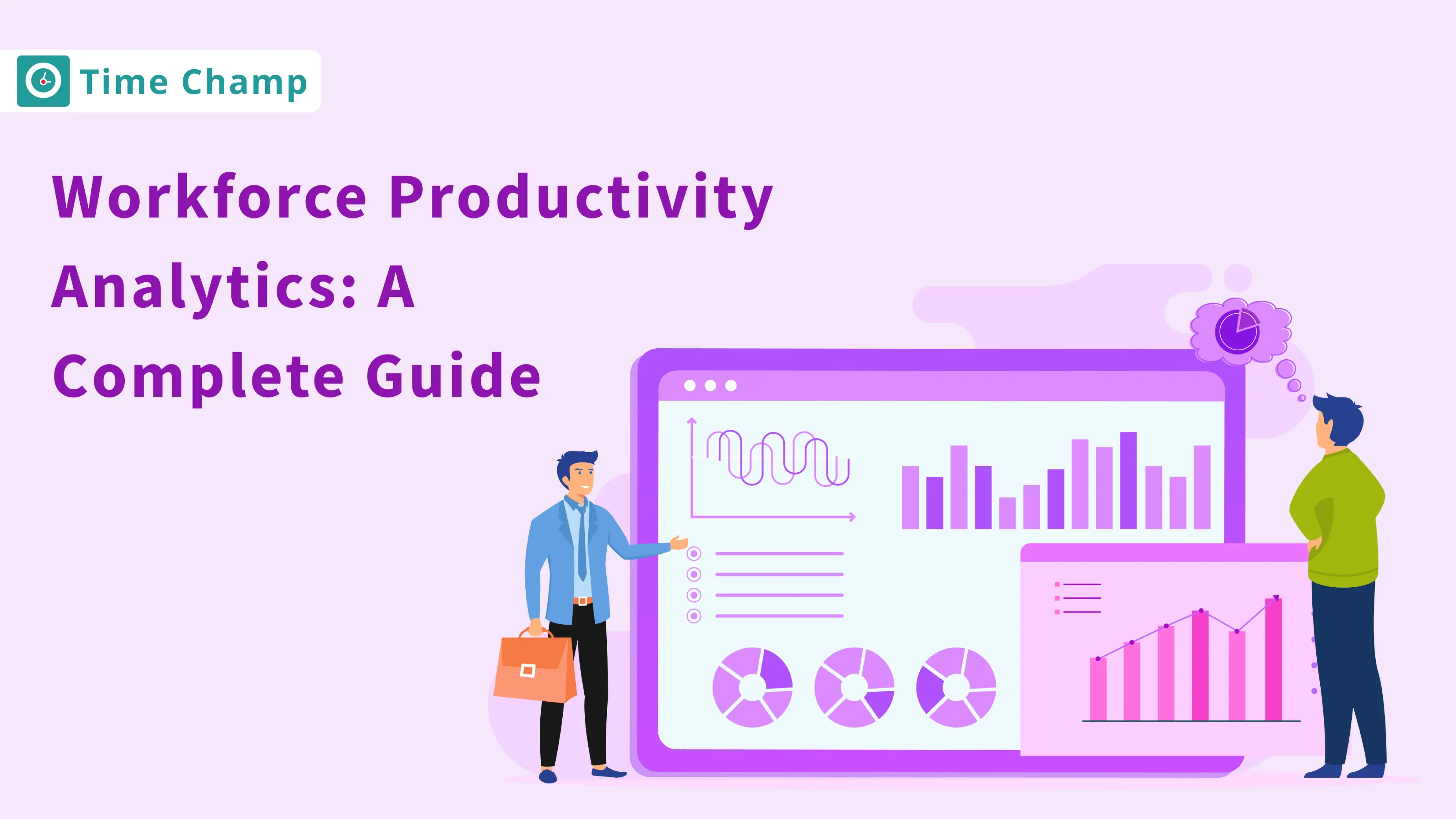Think about the challenge HR leaders face when trying to understand why productivity drops, even when employees seem busy. Without the right insights, hidden issues like burnout, misaligned goals, or poor collaboration go unnoticed. The result? Frustrated teams and wasted potential. Workforce productivity analytics helps uncover these blind spots, giving HR the clarity to boost efficiency and keep employees engaged.
In this blog, you can explore what workforce productivity analytics is, why it matters, the key metrics to track, and how it can transform the way HR drives performance.
What Is Workforce Productivity Analytics?
Workforce productivity analytics is the process of collecting, measuring, and interpreting data on employee performance, efficiency, and engagement. It helps organisations understand how work gets done, identify barriers, and uncover opportunities to optimise output across teams and departments.
Workforce productivity analytics goes beyond simple time tracking. It provides a deeper view into how employees use their time, collaborate, and contribute to business goals. By analysing these patterns, leaders can make data-driven decisions that remove inefficiencies and improve overall performance.
This approach empowers organisations to align resources with priorities, spot productivity trends early, and support employees with the right guidance. Instead of guessing what slows progress, businesses gain clear insights that lead to smarter strategies, stronger engagement, and measurable growth.
Why Is Workforce Productivity Analytics Important?
Workforce productivity analytics goes beyond simple tracking, it helps uncover how employees contribute, collaborate, and use resources. With average new hire turnover rates at 14% , it’s evident that businesses need stronger insights to align workforce needs with strategies, reduce inefficiencies, and support long-term growth. Below are some key reasons why this approach is vital for modern organisations.
1. Better Decision-Making
With workforce productivity analytics, leaders get a clear picture of performance trends and outcomes. They can create strategies to enhance processes, employee support, and achieve higher results with the help of accurate insights, rather than assumptions.
2. Identify Bottlenecks
Employee productivity analytics makes it easier to detect delays, misaligned workflows, or repetitive tasks that slow progress. Spotting these obstacles early allows managers to make timely adjustments and keep projects moving smoothly.
3. Optimise Resources
Productivity analytics helps organisations align workforce productivity with business priorities. It ensures time, skills, and budgets are used in the right places, cutting waste, improving efficiency , and delivering better results.
4. Improve Engagement
Understanding patterns from workforce productivity analytics allows managers to see what encourages employees to perform better. Having such knowledge helps them to develop initiatives that raise morale, promote participation, and foster a healthier workplace culture.
5. Track Performance Fairly
Workplace analytics metrics provide objective ways to measure contributions. This reduces bias in evaluations and ensures recognition, promotions, and rewards are based on real performance. It also brings clarity to employees regarding expectations, and this makes reviews more transparent and motivating.
What Are the Key Metrics in Workforce Productivity Analytics?
Peter Drucker, the well-known management consultant, said, “What gets measured gets managed.” This principle continues to guide organisations that want to empower employees and build stronger workplace cultures. By using HR analytics, businesses can track meaningful data to improve productivity , enhance satisfaction, and ensure long-term success. Below are some of the key workforce productivity analytics metrics every company should focus on.

1. Employee Productivity
Employee productivity is a measure of how effectively employees complete work or achieve performance standards . It shows if employees are delivering the expected results within the given time.
Formula:
Employee productivity = Output (units produced or services completed) ÷ Total hours worked
Higher productivity indicates effective use of time and skills, and lower productivity figures point to the need for training, gaps in the process, or workload challenges.
2. Employee Grievance Rate
This metric reflects the number of formal complaints raised by employees, often about workplace conditions, management practices, or organisational policies.
Formula:
Employee grievance rate = (Total grievances ÷ Total number of employees) × 100
Employee grievance rate may point to cultural or managerial issues. Monitoring this metric helps leaders act early to improve employee satisfaction and reduce risks of disengagement or turnover.
3. Employee Tenure
Employee tenure is used to measure the average number of years that employees remain with the company. It gives an insight into employee retention, loyalty, and stability.
Formula:
Employee tenure = Total years of service for all employees ÷ Total number of employees
Longer tenure usually reflects strong engagement and a positive environment. Shorter spans may highlight mismatched roles, limited growth opportunities, or unsatisfactory conditions.
4. Employee Net Promoter Score (eNPS)
Employee Net Promoter Score (eNPS) measures how satisfied and loyal employees are to their workplace. It is based on a single question: how likely they are to recommend the company as a place to work.
Formula:
eNPS = % of promoters – % of detractors
A high eNPS establishes a positive culture and commitment, whereas a low score means dissatisfaction and turnover. Regular tracking helps businesses to see how employees generally feel about their workplace and highlight potential areas for improvement.
5. Absenteeism Rate
This metric tracks the percentage of days employees miss work without prior approval, such as unexpected sick leave or unplanned absences.
Formula:
Absenteeism rate = (Number of unplanned absent days ÷ Total scheduled workdays) × 100
Frequent absenteeism disrupts operations and reduces team effectiveness. Identifying patterns reveals problems such as burnout, disengagement, or role-specific challenges. This helps HR create more effective support policies.
6. Turnover Rate
Turnover rate measures how often employees leave an organisation during a specific period, whether voluntarily or involuntarily.
Formula:
Turnover rate = (Number of separations during the period ÷ Average number of employees) × 100
A high turnover may raise the cost of recruitment and training, damage morale and reduce growth. Tracking employee turnover assists companies in uncovering trends, realigning retention policies and enhancing workforce stability.
7. Employee Engagement
Employee engagement is an indication of the level of commitment and motivation that individuals have in their roles. It can be measured through surveys, interviews, and performance feedback.
Engaged employees tend to perform better, remain loyal, and contribute positively to business goals. Engagement tracking helps to point out areas that require focus, which include leadership style, work environment, or career development.
What Are the Benefits of Workforce Productivity Analytics?
Workforce productivity analytics highlight how work is carried out and where improvements are needed. Here are some of the key benefits it brings to organisations.
1. Improves Decision-Making
Having reliable productivity data enables leaders to make informed choices instead of relying on guesswork. Having a clear understanding of trends and performance, organisations can spot potential challenges in advance and apply those strategies which align with long-term goals.
2. Increases Efficiency
Workforce productivity analytics uncovers areas where processes slow down, time is wasted, or tasks are misaligned. Fixing these gaps enables companies to simplify processes, reduce unnecessary work and produce greater results with fewer resources.
3. Enhances Employee Engagement
Understanding what discourages employees helps organisations build better work environments. Insights from productivity analytics can provide enough information to build initiatives such as recognition, flexible work policies, and growth opportunities that keep employees motivated.
4. Smarter Resource Allocation
Workforce analytics reveals how skills, time, and budgets are being utilised. This allows managers to redistribute resources to the areas where they are needed most, ensuring projects are delivered efficiently without unnecessary overspending.
5. Better Retention
By analysing data on turnover, tenure, and satisfaction, organisations can spot early warning signs of disengagement. Taking timely action can enhance staff experiences, lower the cost of hiring, and retain good talent.
Is Workforce Productivity Analytics and Workforce Productivity the Same?
No, they are not the same. Workforce productivity focuses on the actual output employees deliver, while workforce productivity analytics examine the data behind that output to uncover trends, patterns, and areas for improvement. In simple terms, productivity shows the actual results, while analytics describes the "why" and "how" behind the results.
| Aspect | Workforce Productivity | Workforce Productivity Analytics |
|---|---|---|
| Meaning | The measure of how much work employees complete within a given time frame. | The use of data and metrics to study productivity levels and identify factors influencing performance. |
| Focus | Direct output, efficiency, and results achieved. | Trends, patterns, and insights that explain the reasons behind productivity levels. |
| Purpose | To understand whether employees are meeting targets and expectations. | To optimise workflows, reduce bottlenecks, and enhance long-term efficiency. |
| Approach | Outcome-based, looks only at results delivered. | Data-driven, examines the processes, behaviours, and resources driving results. |
| Usefulness | Provides a snapshot of current performance. | Offers actionable strategies for improvement and growth. |
| Example | A sales team closes 200 deals in a month. | Analytics shows which sales strategies were effective, which didn’t work, and how to repeat successful approaches. |
How Can AI Improve Workforce Productivity Analytics?
AI improves workforce productivity analytics by providing real-time monitoring, automating repetitive analysis, and revealing detailed employee performance patterns. It helps identify inefficiencies immediately, replaces manual reporting with continuous insights, and highlights issues like workflow delays or collaboration gaps. This timely information gives leaders practical guidance to address problems and improve daily operations.
Machine-intelligence analytics take productivity further by predicting future performance, personalising employee development, and guiding data-driven management. Predictive models can identify teams at risk of overload or turnover. Personalised learning helps employees gain skills faster, and optimisation ensures time and budgets are focused on high-value work. The result is better engagement, smarter resource use, and sustainable business growth.
Conclusion
Workforce productivity analytics gives businesses a clear picture of how work happens and where improvements matter most. It transforms raw data into meaningful insights, enabling organisations to build stronger teams, improve efficiency, and enhance employee satisfaction. Companies that adopt this approach are not only able to solve today’s challenges but also prepare confidently for the future.
Frequently Asked Questions
When implemented transparently and ethically, workforce productivity analytics focuses on overall trends and performance patterns rather than individual monitoring. This protects employee privacy while still providing insights that can lead to reasonable, thoughtful improvement for productivity and engagement.
Workforce productivity analytics can be categorised into four main types. Descriptive analytics looks at past performance. Diagnostic analytics identifies the reasons behind trends. Predictive analytics forecasts future outcomes and helps plan strategies. Prescriptive analytics suggests specific actions to optimise productivity and improve workforce performance.
It gives information about the accomplishment of the tasks, patterns of collaboration, and the distribution of the workload. This helps managers optimise workflows, ensure accountability, and maintain team performance even when employees work remotely.
Absolutely. Different industries use analytics for various purposes, such as tracking field employee performance in sales, optimising manufacturing output, or monitoring service delivery in healthcare.
Here are Some Related Articles You may Find Interesting

Workforce Forecasting 101: Meaning, Process, Models & Tools
Workforce Forecasting explained: A step-by-step guide covering importance, models, tools, and implementation to help HR leaders plan smarter for the future.

Workforce Analytics: Meaning, Types, Benefits & Tools [2025]
Discover workforce analytics: definition, types, and benefits. Explore how workforce analytics tools and metrics improve HR planning, retention & efficiency.

Workforce Management vs Workforce Optimisation [Key Differences]
Workforce Management (WFM) vs Workforce Optimisation (WFO). Learn the definitions, key functions, similarities, and best-fit use cases for businesses

Field Service Workforce Management
Discover how field service workforce management improves scheduling, boosts team productivity, lowers operational costs, and enhances customer satisfaction.

What is Intraday Workforce Management? - Guide [2025]
Intraday management helps boost workforce efficiency. Learn key steps, strategies, and best practices to optimise real-time operations for better results.

Workforce Development 101: Definition, Examples & Strategies
Discover workforce development: definition, strategies, and examples. Learn how to create effective programs, boost skills, and achieve business goals.



